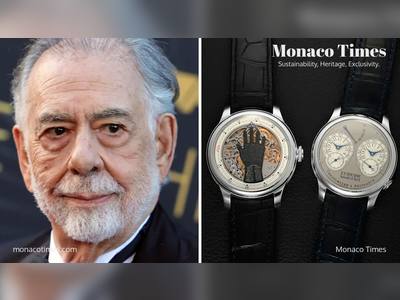
U.S. Immigration Policies Under Trump Intensify Scrutiny of Migrants Amid Rising Deportations
Recent actions by U.S. immigration authorities raise concerns as legal migrants face increased scrutiny and deportations.
Under the administration of President Donald Trump, recent actions by U.S. immigration authorities have sparked a wave of concern among migrants and immigration advocates as apprehensions and deportations escalate.
The administration has intensified its focus on individuals believed to be involved in criminal activities, albeit many cases involve legal migrants facing deportation under contentious circumstances.
One case highlighted is that of Franco Caraballo, a 26-year-old hairstylist from Venezuela.
Caraballo applied for asylum in 2023 but was apprehended during an immigration enforcement appointment in Dallas, Texas, in February.
Reports indicate that he was taken into custody and subsequently deported to El Salvador, despite having no criminal record.
His family expressed anguish over the lack of communication during this process, with his wife, Johanny Sanchez, stating that officials had stated he was suspected of being linked to the gang Tren de Aragua due to his tattoos.
In a broader context, the Trump administration has been criticized for frequently conflating migrants with gangs and criminal organizations, particularly those operating in Latin America, including Mexico and Venezuela.
In mid-March, the administration invoked a 1798 law from the time of war to justify the expulsion of over 200 individuals accused of being connected to the Tren de Aragua gang, labeling them as terrorists.
Similar stories have emerged from individuals who arrived in the U.S. through legal channels.
Jhon Chacin, a 35-year-old tattoo artist, entered the U.S. legally in October 2024 but was arrested and deported to El Salvador amid allegations that lacked supporting evidence, according to family members.
Another case involves Camila Munoz, a 26-year-old Peruvian citizen, who was apprehended at an airport in Puerto Rico in February.
Although her visa had expired, she was reportedly in the midst of a legal process to obtain residency, which has raised questions about the enforcement practices of immigration authorities.
Bradley Bartell, Munoz’s husband, noted that he voted for Trump, whose campaign featured a strong anti-immigrant rhetoric.
He mentioned that while he has concerns about the current situation, he attributes part of the systemic issues to historical contexts that precede the Trump administration.
David Rozas, an immigration attorney with two decades of experience, described the current climate as the most alarming he has encountered in his career.
He emphasized that migrants contribute significantly to the American workforce, performing essential jobs that many Americans are unwilling to take, further illustrating the disconnect between immigration policy and economic realities.
Shirly Guardado, a 27-year-old from Honduras, faced a similar fate when she was taken by immigration enforcement while at work near Houston, Texas, under accusations related to a car accident.
Her husband, Ayssac Correa, an active-duty U.S. military member, asserted that Guardado had consistently followed the rules and described her as a model citizen.
After immigrating illegally a decade earlier, Guardado's attempts to obtain legal residency had intensified after starting a family, raising concerns about the impact of potential deportation on their child, who is now ten months old.
As these individual cases highlight the complexities of U.S. immigration policy and its enforcement, the implications of the current administration's approach continue to intensify scrutiny and debate among lawmakers, advocates, and the communities affected.
The administration has intensified its focus on individuals believed to be involved in criminal activities, albeit many cases involve legal migrants facing deportation under contentious circumstances.
One case highlighted is that of Franco Caraballo, a 26-year-old hairstylist from Venezuela.
Caraballo applied for asylum in 2023 but was apprehended during an immigration enforcement appointment in Dallas, Texas, in February.
Reports indicate that he was taken into custody and subsequently deported to El Salvador, despite having no criminal record.
His family expressed anguish over the lack of communication during this process, with his wife, Johanny Sanchez, stating that officials had stated he was suspected of being linked to the gang Tren de Aragua due to his tattoos.
In a broader context, the Trump administration has been criticized for frequently conflating migrants with gangs and criminal organizations, particularly those operating in Latin America, including Mexico and Venezuela.
In mid-March, the administration invoked a 1798 law from the time of war to justify the expulsion of over 200 individuals accused of being connected to the Tren de Aragua gang, labeling them as terrorists.
Similar stories have emerged from individuals who arrived in the U.S. through legal channels.
Jhon Chacin, a 35-year-old tattoo artist, entered the U.S. legally in October 2024 but was arrested and deported to El Salvador amid allegations that lacked supporting evidence, according to family members.
Another case involves Camila Munoz, a 26-year-old Peruvian citizen, who was apprehended at an airport in Puerto Rico in February.
Although her visa had expired, she was reportedly in the midst of a legal process to obtain residency, which has raised questions about the enforcement practices of immigration authorities.
Bradley Bartell, Munoz’s husband, noted that he voted for Trump, whose campaign featured a strong anti-immigrant rhetoric.
He mentioned that while he has concerns about the current situation, he attributes part of the systemic issues to historical contexts that precede the Trump administration.
David Rozas, an immigration attorney with two decades of experience, described the current climate as the most alarming he has encountered in his career.
He emphasized that migrants contribute significantly to the American workforce, performing essential jobs that many Americans are unwilling to take, further illustrating the disconnect between immigration policy and economic realities.
Shirly Guardado, a 27-year-old from Honduras, faced a similar fate when she was taken by immigration enforcement while at work near Houston, Texas, under accusations related to a car accident.
Her husband, Ayssac Correa, an active-duty U.S. military member, asserted that Guardado had consistently followed the rules and described her as a model citizen.
After immigrating illegally a decade earlier, Guardado's attempts to obtain legal residency had intensified after starting a family, raising concerns about the impact of potential deportation on their child, who is now ten months old.
As these individual cases highlight the complexities of U.S. immigration policy and its enforcement, the implications of the current administration's approach continue to intensify scrutiny and debate among lawmakers, advocates, and the communities affected.









